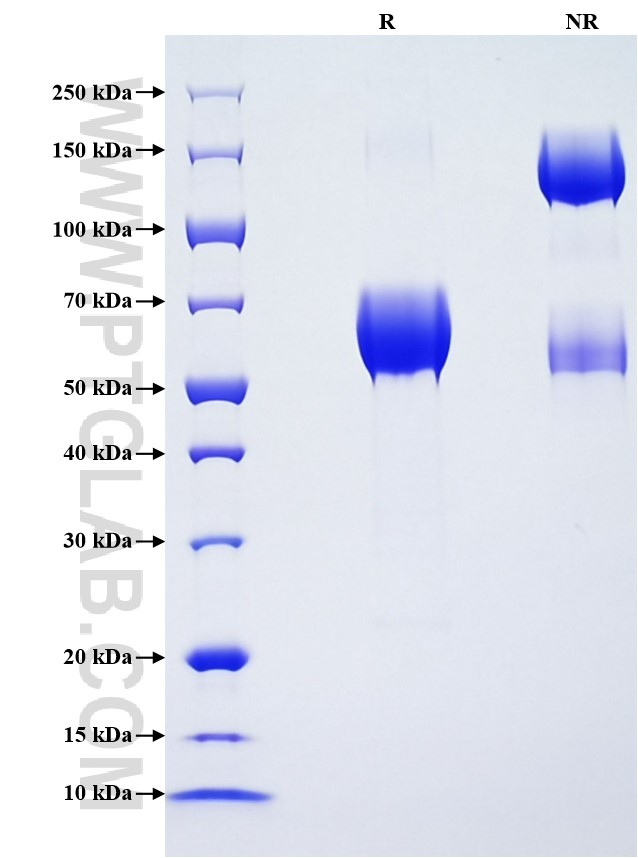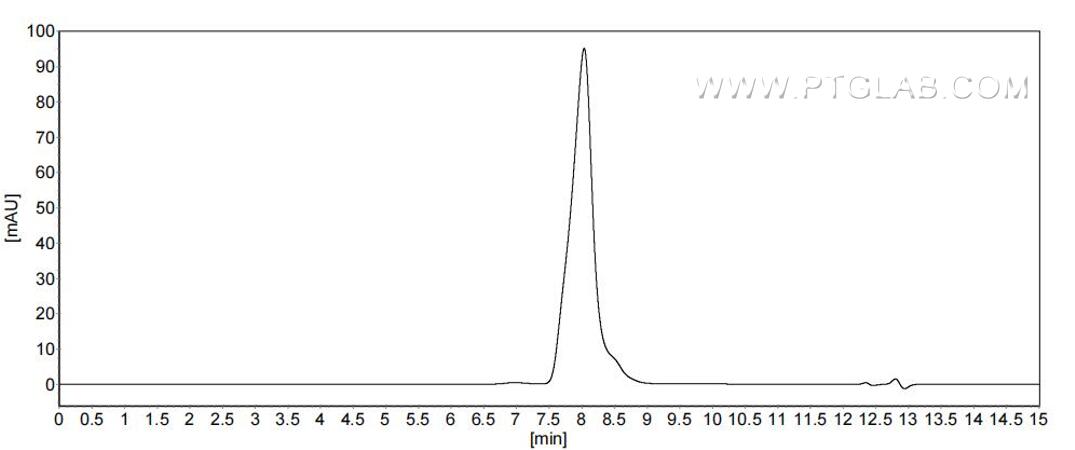Recombinant Mouse ORM1 protein (rFc Tag) (HPLC verified)
种属
Mouse
纯度
>90 %, SDS-PAGE
>90 %, SEC-HPLC
标签
rFc Tag
生物活性
未测试
验证数据展示
产品信息
| 纯度 | >90 %, SDS-PAGE >90 %, SEC-HPLC |
| 内毒素 | <0.1 EU/μg protein, LAL method |
| 生物活性 |
Not tested |
| 来源 | HEK293-derived Mouse ORM1 protein Gln19-Ala207 (Accession# Q60590) with a rabbit IgG Fc tag at the C-terminus. |
| 基因ID | 18405 |
| 蛋白编号 | Q60590 |
| 预测分子量 | 48.0 kDa |
| SDS-PAGE | 50-70 kDa, reducing (R) conditions |
| 组分 | Lyophilized from 0.22 μm filtered solution in PBS, pH 7.4. Normally 5% trehalose and 5% mannitol are added as protectants before lyophilization. |
| 复溶 | Briefly centrifuge the tube before opening. Reconstitute at 0.1-0.5 mg/mL in sterile water. |
| 储存条件 |
It is recommended that the protein be aliquoted for optimal storage. Avoid repeated freeze-thaw cycles.
|
| 运输条件 | The product is shipped at ambient temperature. Upon receipt, store it immediately at the recommended temperature. |
背景信息
Orosomucoid 1 (ORM1) is an acute-phase protein that is primarily expressed by hepatocytes under stress conditions, such as during inflammation, injury, or infection. It is a member of the lipocalin family and is known for its immunomodulatory properties, including the ability to inhibit neutrophil chemotaxis, superoxide production, lymphocyte proliferation, and platelet aggregation. ORM1 also has the capacity to interfere with cytokine function by inducing the secretion of soluble TNFα receptor (sTNFR) and IL-1 receptor antagonist (IL1-Ra). In mice, ORM1 plays a significant role in liver regeneration. Transcriptome analysis has revealed that ORM1 is mostly induced in hepatocytes as a regulator of mouse liver regeneration. Knockdown of ORM1 in mice has been shown to impair liver regeneration, with poor hepatocyte growth and suppressed cell cycle signaling. This suggests that ORM1 is not only a marker of acute-phase response but also a functional protein that contributes to the regenerative process of the liver.
参考文献:
1. Xian-Yang Qin. et al. (2017). EBioMedicine. 24:257-266. 2. Giovanni Ligresti. et al.(2012). PLoS One.7(8):e41387. 3. Lei Yue. et al. (2023). Sci Rep. 13(1):14092.

